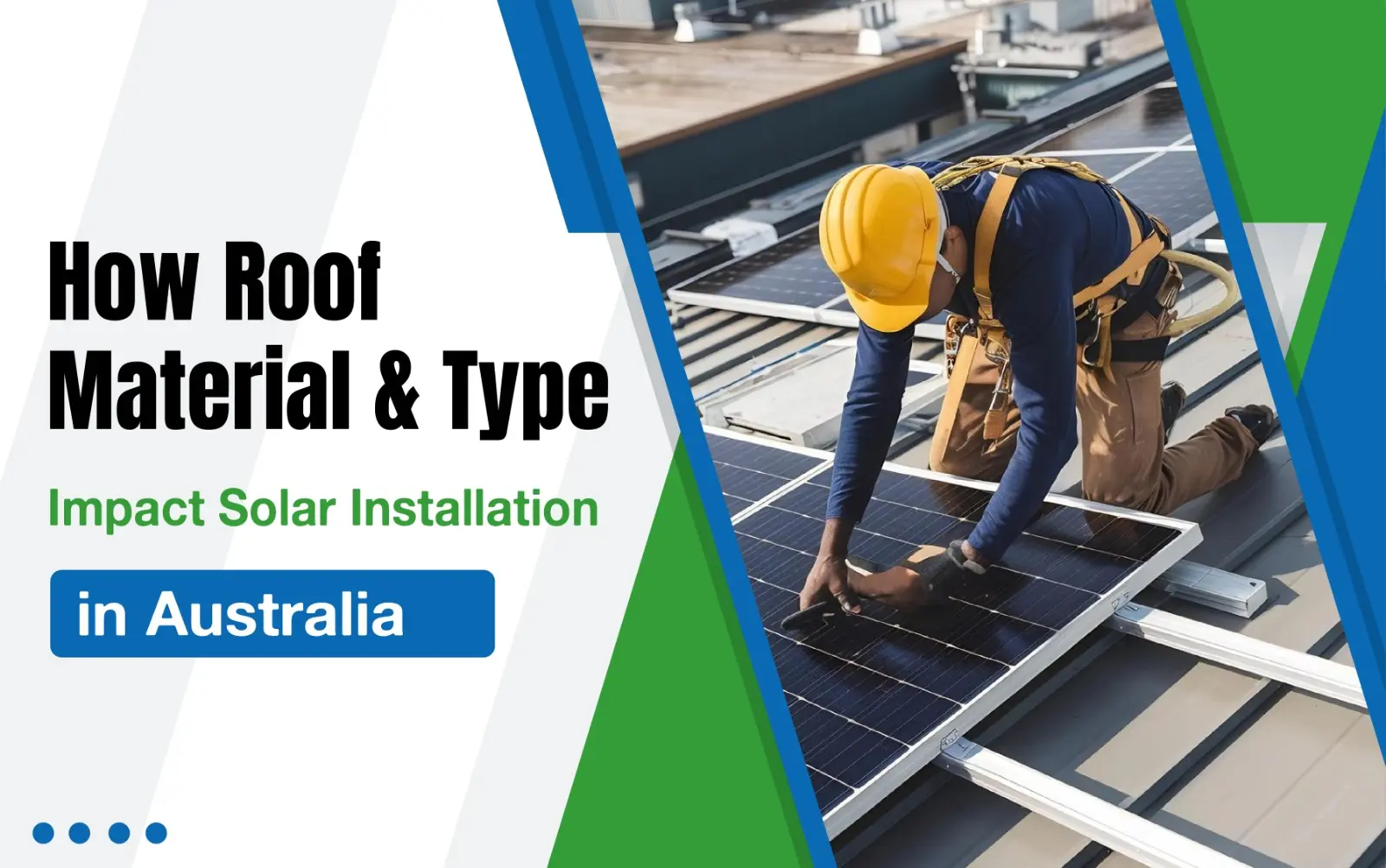Thinking about going solar? Well, you aren’t the only one! According to the Clean Energy Council’s latest Rooftop Solar and Storage Report, rooftop solar systems now generate about 11.2% of Australia’s total electricity, and commercial rooftops are contributing more than ever. However, here’s something many business owners overlook: the roof. The roof of your commercial establishment plays a massive role in determining whether it can support solar infrastructure or not.
For instance, if your roof is too steep, fragile, or old, that means extra cost, extra planning, and sometimes even delays. So, before you sign any contracts or think about installing solar panels, let’s talk about why your roof types matters so much, and how understanding it upfront could save you stress and money later.
A Brief Overview on the Significance of Commercial Solar Panels
Solar panels might look lightweight, but installing them on commercial buildings involves a wide range of processes ranging from drilling and bolting to cabling and adding rack systems, so your solar panels can stay secure for the next 20-25 years. However, if your roof is fragile, oddly shaped, or at the wrong angle, it invariably and implicitly leads to delays, added costs, or even structural issues. In a nutshell, before you invest in a commercial solar system, check whether your roof can support it safely and efficiently.
Different Roof Designs Mean Distinct Challenges
Let us tell you, Australia doesn’t lack diversity when it comes to commercial architecture. Commercial buildings come in many shapes and sizes- from warehouses and office complexes to retail centers and factories, there are various roof types with their own pros and cons for solar.
While a simple, north-facing gable roof is every installer’s dream, a complex multi-pitch design might mean extra brackets, wiring, or even shade problems. Besides, the slope or pitch also matters because panels work best when they are installed at a certain angle to the sun. If your roof angle is shallow, your installer may need to adjust with special framing, which raises installation costs, but improves efficiency.
How Roofing Material Impacts Installation
Just like the type, the surface, the roof material is equally important. In Australia, you can find a mix of tiles, metal sheets, and even heritage slate that create a range of installation challenges. For instance:
- Metal roofing like Colorbond, are great for solar because they are smooth, sturdy, and easy to attach racking to.
- On the other hand, terracotta tiles look stunning, but they are a tad brittle and can crack if they aren’t handled carefully, which means your installer should take some extra time and be extra cautious.
- Slate roofs, however, are notoriously delicate, and sometimes, they even require special hardware or even partial roof reinforcement before the work starts.
In a nutshell, along with understanding the roof types, you also need to understand the types of roof materials upfront, so your business can budget accurately and avoid additional costs.
Comparison Table
| Roof Surface | Installation Difficulty | Solar Efficiency Impact |
|---|---|---|
| Colorbond/ Metal Sheets | Low | Excellent (smooth, strong) |
| Concrete Tiles | Medium | Good |
| Terracotta Tiles | High | Good but needs care |
| Slate | High | Depends on structure |
| Flat Roof (Membrane) | Medium | Good if tilted |
Why Do You Need to Consider Structural Integrity and Roof Age?
Solar panels tend to last about two decades or more if you install them the right way, depending on roof types and materials. This means that your roof needs to last at least that long. If you are working with an older building, consider a roof inspection first. Weak battens, rust, or loose tiles can jeopardise the system, and the last thing you want is to dismantle the panels just to fix the leaks later. Always get the roof materials checked by a professional for durability before installation.
Roof Angle & Orientation for Maximising Solar Output
In Australia, a north-facing roof catches the most sunlight year-round, but east-west orientations are also viable depending on energy usage patterns. Flat roofs work too, but your installer may add tilted framing for optimal performance, and this extra framing slightly increases cost but improves returns by aligning panels perfectly.
If your roof is steep, installers must use specialised brackets to keep panels flush and safe. These design tweaks don’t just protect your investment and your commercial infrastructure; they directly influence how much energy your panels can generate.
Climate & Maintenance Considerations
Australia’s climate isn’t gentle on rooftops. From harsh UV rays to tropical storms, panels and roofs alike must withstand decades of exposure. Sturdy types of roofs like corrugated steel hold up brilliantly, while delicate tiles may demand periodic inspection and maintenance. Consider the cost of upkeep when choosing both your roof and your solar system.
Preparing Your Business for the Future
If your roof needs replacing within the next decade, it’s often smarter to do it before installing solar. Panels complicate future reroofing because they must be removed and reinstalled. Try discussing your options and the cost of future-proofing with your builder or installer, and this will help you ensure that your solar panels stay efficient for years without replacement or repair headaches.
The Bottom Line
Going solar isn’t just about grabbing the first deal you see; it’s about making sure your venture can fully support and benefit from it. So, try to understand all these factors, work with a professional solar panel installer who can guide you on all these aspects about roof types and materials, and you will be set to avoid surprises and truly harness the true prowess of Australia’s solar energy.
Ready to move to solar for cleaner energy, lower bills, and a space that’s both greener and structurally sound for decades? Reach out to our team at EcoGreen Australia today!

